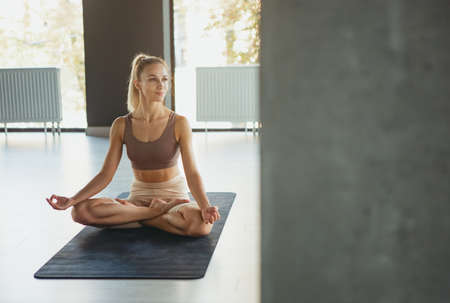Understanding the British Climate
When it comes to maintaining a consistent Pilates practice in the UK, understanding the unique characteristics of the British climate is crucial. The nation is renowned for its unpredictable weather—ranging from persistent rain and brisk winds to brief moments of sunshine, often all within a single day. These fluctuating conditions can significantly impact not only motivation but also how and where you exercise. In Britain, weather influences everything from daily routines to public transport, so it’s no surprise that it should shape your approach to Pilates as well. Adapting your practice to account for dampness, cooler temperatures, or sudden sunny spells ensures you remain comfortable, safe, and able to make the most out of each session. By aligning your Pilates routine with seasonal changes, you can boost consistency and wellbeing throughout the year—a true necessity given the UK’s ever-changing skies.
Adapting Pilates for Winter
The British winter, characterised by shorter days, colder temperatures, and persistent dampness, presents unique challenges for maintaining a consistent Pilates routine. Adapting your practice to address these seasonal changes can help you stay motivated, keep warm, and protect your joints from the effects of cold and moisture.
Creating a Cosy Indoor Environment
During the winter months, shifting your Pilates sessions indoors is not just practical—its essential for comfort and safety. Choose a well-insulated room with enough space to move freely. You may want to use a thicker exercise mat and consider adding soft lighting or calming music to make your environment inviting. Consistency is key; setting a regular schedule helps establish routine even when daylight hours are limited.
Layering Up for Comfort and Performance
Proper attire can make a significant difference in keeping muscles warm and supple during winter workouts. Wear moisture-wicking base layers topped with breathable jumpers or long-sleeve shirts. Socks with grip can help prevent slips on wooden floors common in British homes. Here’s a simple guide to recommended winter Pilates attire:
| Layer | Purpose | Recommended Material |
|---|---|---|
| Base Layer | Retain body heat, wick away sweat | Technical fabrics (polyester blends) |
| Mid Layer | Add warmth without bulk | Cotton/poly blend or light fleece |
| Outer Layer | Prevent heat loss before/after session | Knit jumper or hoodie |
| Socks | Improve grip, keep feet warm | Cotton with rubber grips |
Pilates Routines to Support Joint Health in Damp Weather
Damp conditions can aggravate joint discomfort, especially in those susceptible to arthritis or stiffness. Incorporating supportive stretches and gentle mobilisation exercises at the start of your practice is crucial. Focus on dynamic stretches for the wrists, ankles, hips, and spine to enhance circulation and reduce rigidity.
Sample Warm-Up Sequence for Cold Days:
- Ankle Circles: 10-15 rotations each direction per foot
- Spinal Rotations: Gentle seated twists (8–10 reps each side)
- Shoulder Rolls: Forward and backward rolls (10 reps each)
- Cat-Cow Stretches: To mobilise the spine and increase warmth (10 reps)
- Knee Hugs: Lying on your back, drawing knees to chest (hold for 20 seconds)
Staying Motivated through Winter
The psychological impact of darker days can affect motivation. Setting realistic goals, tracking progress, and perhaps joining virtual group classes can help maintain engagement. Remember, adapting your routine to fit the British winter isn’t about scaling back—it’s about making smart adjustments so you can continue enjoying the physical and mental benefits of Pilates all year round.
![]()
3. Spring Pilates: Embracing Renewal
Spring in the UK is marked by milder weather, blossoming landscapes, and noticeably longer days, making it an ideal time to reinvigorate your Pilates routine. As nature awakens, so too can your practice. Take advantage of the increased daylight by gradually elevating your activity levels and exploring outdoor sessions when possible—whether thats in a local park, your garden, or even a balcony with fresh air.
Building Energy After Winter
The transition from winter to spring offers an opportunity to gently increase the intensity and duration of your workouts. Focus on progressive routines that rebuild strength and stamina lost during the colder, darker months. Incorporate dynamic warm-ups, such as standing roll-downs or gentle mobility exercises, to awaken both body and mind. This approach helps stimulate circulation and boost overall vitality, aligning with the season’s theme of renewal.
Outdoor Pilates: Making the Most of British Spring
Whenever weather permits, practicing Pilates outdoors can be incredibly beneficial. Exposure to natural light supports vitamin D synthesis and has been linked to improved mood and energy levels—particularly important after months of limited sunshine. Choose locations sheltered from strong winds and damp ground; consider using a thicker mat for extra comfort on uneven surfaces. Early morning or late afternoon sessions can help you synchronise with nature’s rhythms while avoiding peak pollen times.
Addressing Seasonal Allergies
For many in the UK, springtime means battling hay fever and other seasonal allergies. If you’re affected, schedule outdoor sessions when pollen counts are lower (typically after rain or late in the day), and opt for nasal breathing techniques to filter allergens more effectively. Alternatively, keep windows open during indoor sessions for fresh air without direct exposure to allergens. Integrating breathwork into your Pilates routine not only supports respiratory health but also enhances relaxation—a valuable counterbalance during allergy season.
By tailoring your Pilates practice to embrace spring’s unique opportunities and challenges, you’ll foster a sense of renewal that resonates with both body and environment, helping you feel energised as you move into the brighter months ahead.
4. Summer Strategies for Pilates
British summers may be short-lived and unpredictable, but when the sun does make an appearance, it’s the perfect opportunity to revitalise your Pilates routine. Making the most of these rare sunny days can boost both your physical health and mental wellbeing. Here are practical strategies for adapting your practice during the summer months:
Take Your Practice Outdoors
Embrace the fresh air by moving your Pilates session outside—whether it’s in your garden, a local park, or along a scenic coastal path. Outdoor practice allows you to benefit from natural light and connect with your surroundings, which is linked to improved mood and reduced stress levels. Remember to bring a mat suitable for grass or uneven ground.
Adjust Intensity for Warmer Temperatures
The UK rarely experiences extreme heat, but even moderate temperature increases can affect your stamina. It’s essential to listen to your body, scale back on high-intensity routines if necessary, and schedule sessions during cooler parts of the day—typically early morning or late evening.
Pilates Modification |
Summer Consideration |
|---|---|
| Mat-based Flow | Opt for shadier spots and lighter clothing for comfort |
| Standing Series | Reduce repetitions to prevent overheating |
| Core Workouts | Incorporate gentle stretches between sets for cooling down |
Stay Hydrated During Heatwaves and Humidity
The British climate can occasionally surprise us with sudden heatwaves or spells of humidity. Dehydration impacts performance and recovery, so bring a reusable water bottle to every session. For longer classes, consider adding electrolyte tablets to replace minerals lost through sweat.
Quick Tips for Summer Pilates Success:
- Avoid direct midday sun—UV is strongest between 11am and 3pm.
- Wear breathable, moisture-wicking clothing.
- If pollen counts are high, practice indoors with windows open for ventilation.
- Always cool down thoroughly after exercise to help regulate body temperature.
By tailoring your Pilates routine to suit the unique challenges and opportunities of a British summer, you’ll maximise both safety and enjoyment throughout the season.
5. Navigating Autumn Transitions
As autumn arrives across the UK, the climate shifts rapidly—temperatures drop, rain becomes more frequent, and daylight hours recede. To adapt your Pilates practice for these changes, it’s crucial to prepare both physically and mentally for cooler, wetter conditions. Begin by ensuring your home or studio space is comfortably heated and free from draughts; layering up in breathable, moisture-wicking clothing can help you stay warm without overheating during sessions. Consider incorporating dynamic warm-ups that gradually raise core temperature and support joint mobility, vital as the body becomes more susceptible to stiffness in colder weather.
Autumn also signals the start of cold and flu season. Pilates routines can be tailored to bolster immune health through mindful movement. Focus on exercises that enhance circulation and promote lymphatic drainage—such as spinal articulation, gentle inversions, and controlled breathwork. These movements stimulate the immune system while reducing stress, a key factor in maintaining wellness during seasonal transitions.
The early onset of darkness can impact motivation and mood. Combat these effects by scheduling Pilates sessions during daylight hours whenever possible—morning or lunchtime routines maximise exposure to natural light, supporting circadian rhythms and emotional well-being. If evening practice is unavoidable, create a bright, inviting space with adequate lighting to help maintain energy levels. Introducing grounding exercises such as standing balances or slow mat work can foster a sense of stability and calm as the evenings draw in.
Developing a consistent autumn routine not only prepares your body for the British climate’s challenges but also cultivates resilience against seasonal illnesses and mood fluctuations. By embracing these adaptive strategies, you ensure your Pilates practice remains an uplifting anchor throughout the shifting landscape of the UK autumn.
6. Adapting Gear and Spaces
When it comes to maintaining a consistent Pilates practice in the UK, adapting your gear and training spaces to suit the ever-changing British climate is essential. The unpredictable nature of British weather—ranging from sudden downpours to brisk winds and occasional sunshine—means that selecting the right clothing is key. Opt for moisture-wicking layers in cooler months and breathable fabrics during warmer spells. Waterproof jackets or windbreakers can be invaluable when practising outdoors, while grippy socks and non-slip mats provide stability on damp or slippery surfaces.
Props such as resistance bands and small hand weights are portable options that enhance your workouts both inside and out. When it comes to location, think creatively: local parks, secluded gardens, or even covered patios offer fresh air benefits when the weather allows. Conversely, community halls, conservatories, or a dedicated indoor corner at home ensure you’re not derailed by rain or cold snaps. By preparing with flexible gear choices and scouting versatile spaces, you can confidently sustain your Pilates routine throughout every British season.


